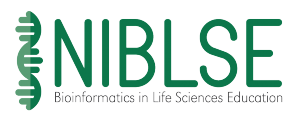Resources
Bioinformatics: the Power of Computers in Biology – a Practical Guide
Author(s): Daniel Barker1, Heleen Plaisier2, Stevie Anne Bain1, Teresa Attwood
1. The University of Edinburgh, Edinburgh, UK 2. Royal Botanic Garden, Edinburgh, UK
1109 total view(s), 282 download(s)
Description
This Practical Guide in the Bringing Bioinformatics into the Classroom series introduces simple bioinformatics approaches for database searching and sequence analysis. A ‘mystery’ gene is used as an exemplar: we first characterise the gene, then use it to explore the impact of gene loss in humans. Analyses are run both online and at the command line, the latter using Raspberry Pi computers running the 4273π variant of Linux (4273pi.org).
Specifically, this Guide introduces a popular Web-based tool for searching biological sequence databases, and shows how similar functionality can be achieved using the Linux command line. On reading the Guide and completing the exercises, users will be able to:
- search biological sequence databases using the online program BLAST, and navigate GenPept sequence records;
- execute some basic Linux commands to perform a set of simple file-manipulation tasks;
- perform BLAST searches via the Linux command line; and
- evaluate the biological implications of search results, with reference to mutations and function.
Cite this work
Researchers should cite this work as follows:
- Barker, D., Plaisier, H., Bain, S. A., Teresa Attwood (2020). Bioinformatics: the Power of Computers in Biology – a Practical Guide. Network for Integrating Bioinformatics into Life Sciences Education, QUBES Educational Resources. doi:10.25334/QBB5-7G72
